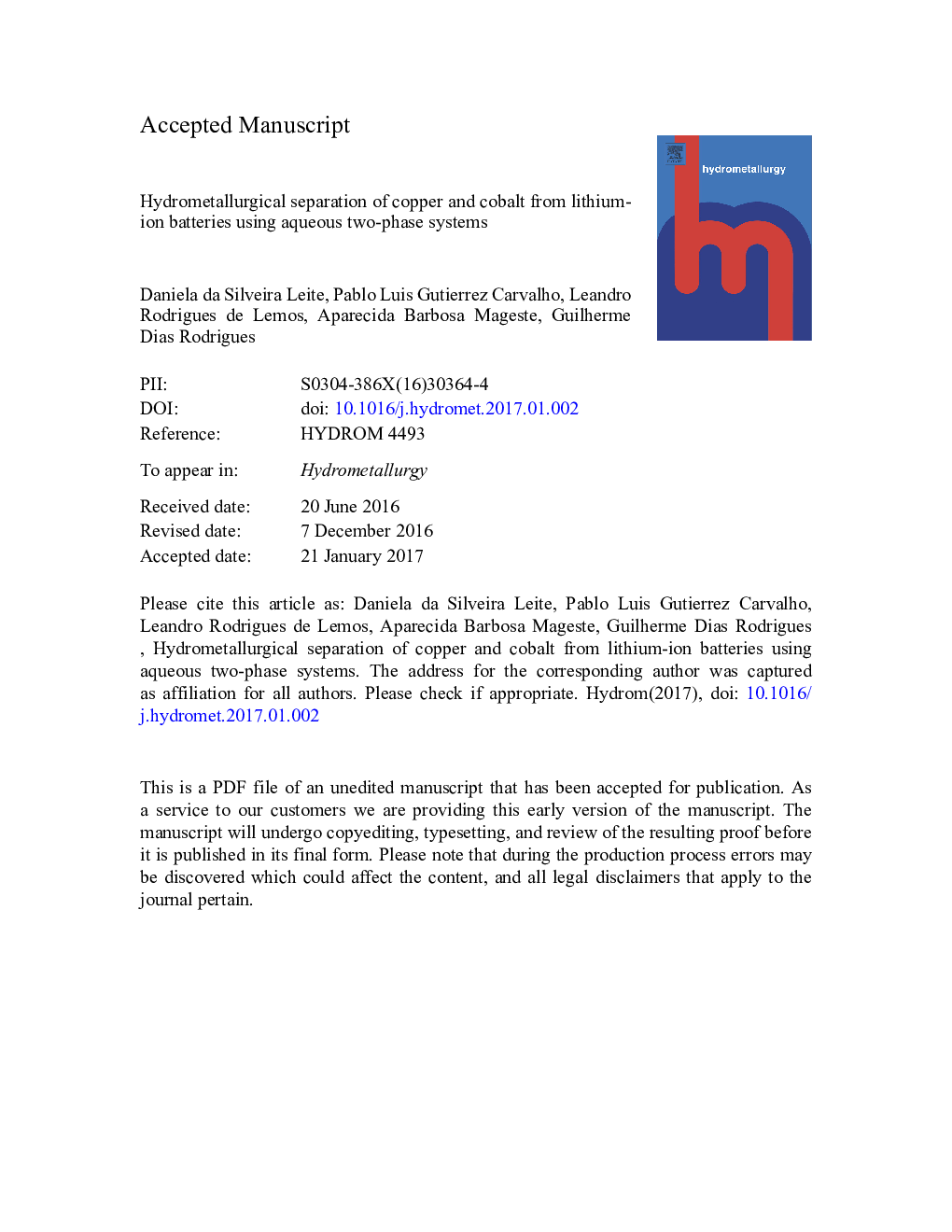| Article ID | Journal | Published Year | Pages | File Type |
|---|---|---|---|---|
| 4769333 | Hydrometallurgy | 2017 | 44 Pages |
Abstract
A new green hydrometallurgical method was developed for the selective extraction of copper and cobalt from spent lithium-ion batteries, using an aqueous two-phase system (ATPS) extraction technique. The method was optimized for the extraction of Cu(II) and Co(II), considering the influence of the following parameters: type and concentration of extractant (1-(2-pyridyl-azo)-2-naphthol (PAN), 1-nitroso-2-naphthol (1N2N), or bis(2,4,4-trimethylpentyl) phosphinic acid (Cyanex 272)); pH (1.00, 6.00, or 11.0); ATPS-forming electrolyte (Na2SO4 or Na3C6H5O7); tie-line length (TLL) of the system; and mass ratio of the top and bottom phases (mTP/mBP). The recovery efficiency was evaluated in terms of the extraction percentage (%E) and the separation factor (S) between copper and cobalt. The best conditions for selective extraction were achieved using an ATPS composed of L64 + Na2SO4 + H2O, with pH = 6.00, TLL = 50.3% (w/w), mTP/mBP = 1, and PAN as the extracting agent, which resulted in βCu,Co = 3.22 Ã 102. The method was subsequently applied to a real lithium-ion battery sample, previously leached with HCl and HNO3. Improved separation of copper and cobalt was achieved using successive extraction steps, resulting in βCu,Co = 5.40 Ã 105. A stripping assay was also performed, and after a single step, 70.5% of the copper was available for an electrowinning process.
Keywords
Related Topics
Physical Sciences and Engineering
Chemical Engineering
Chemical Engineering (General)
Authors
Daniela da Silveira Leite, Pablo Luis Gutierrez Carvalho, Leandro Rodrigues de Lemos, Aparecida Barbosa Mageste, Guilherme Dias Rodrigues,
